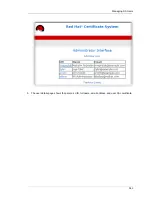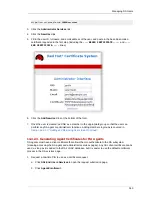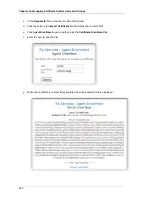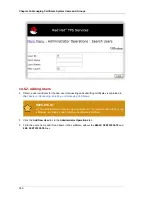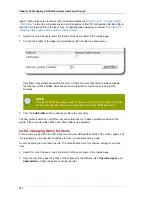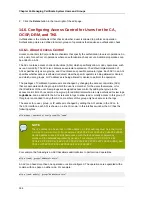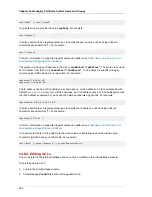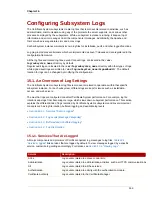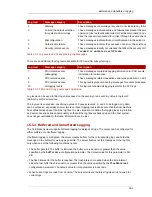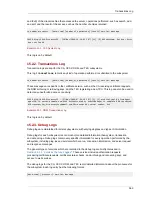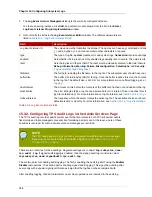
About Access Control
355
An ACI can have more than one group, user, or IP address by separating them with two pipe symbols
(
||
) with a space on either side. For example:
allow (read) group="Administrators" || group="Auditors"
The administrative console can create or modify ACIs. The interface sets whether to allow or deny the
operation in the
Allow and Deny
field, sets which operations are possible in the
Operations
field, and
then lists the groups, users, or IP addresses being granted or denied access in the
Syntax
field.
An ACI can either allow or deny an operation for the specified group, user ID, or IP address. Generally,
ACIs do not need created to deny access. If there are no allow ACIs that include a user ID, group, or
IP address, the group, user ID, or IP address is denied access.
If a user is not allowed access to any of the operations for a resource, then this user is considered
denied; he does not specifically need to be denied access. For example, user
JohnB
is a member
of the
Administrators
group. If an ACL has only the following ACI,
JohnB
would be denied any
access since he does not match any of the allow ACIs:
Allow (read,modify) group="Auditors" || user="BrianC"
There usually is no need to include a deny statement. Some situations can arise, however, when it
is useful to specify one. For example,
JohnB
, a member of the
Administrators
group, has just
been fired. It may be necessary to deny access specifically to
JohnB
if the user cannot be deleted
immediately. Another situation is that a user,
BrianC
, is an administrator, but he should not have
the ability to change some resource. Since the
Administrators
group must access this resource,
BrianC
can be specifically denied access by creating an ACI that denies this user access.
The allowed rights are the operations which the ACI controls, either by allowing or denying permission
to perform the operation. The actions that can be set for an ACL vary depending on the ACL and
subsystem. Two common operations that can be defined are read and modify.
The syntax field of the ACI editor sets the evaluator for the expression. The evaluator can specify
group, name, and IP address (both IPv4 and IPv6 addresses). These are specified along with the
name of the entity set as equals (
=
) or does not equal (
!=
).
The syntax to include a group in the ACL is
group="groupname"
. The syntax to exclude a group is
group!="groupname"
, which allows any group except for the group named. For example:
group="Administrators" || group!="Auditors"
It is also possible to use regular expressions to specify the group, such as using wildcard characters
like an asterisk (
*
). For example:
group="* Managers"
For more information on supported regular expression patterns, see
http://java.sun.com/j2se/1.4.2/
docs/api/java/util/regex/Pattern.html#sum
.
The syntax to include a user in the ACL is
user="userID"
. The syntax to exclude the user is
user!
="userID"
, which allows any user ID except for the user ID named. For example:
Summary of Contents for CERTIFICATE SYSTEM 8.0 - ADMINISTRATION
Page 42: ...20 ...
Page 43: ...Part I Setting up Certificate Services ...
Page 44: ......
Page 190: ...168 ...
Page 208: ...186 ...
Page 223: ...Part II Additional Configuration to Manage CA Services ...
Page 224: ......
Page 256: ...234 ...
Page 270: ...248 ...
Page 280: ...258 ...
Page 292: ...270 ...
Page 293: ...Part III Managing the Subsystem Instances ...
Page 294: ......
Page 408: ...386 ...
Page 438: ...416 ...
Page 439: ...Part IV References ...
Page 440: ......
Page 503: ...Netscape Defined Certificate Extensions Reference 481 OID 2 16 840 1 113730 13 ...
Page 504: ...482 ...
Page 556: ...534 ...
Page 564: ...542 ...

